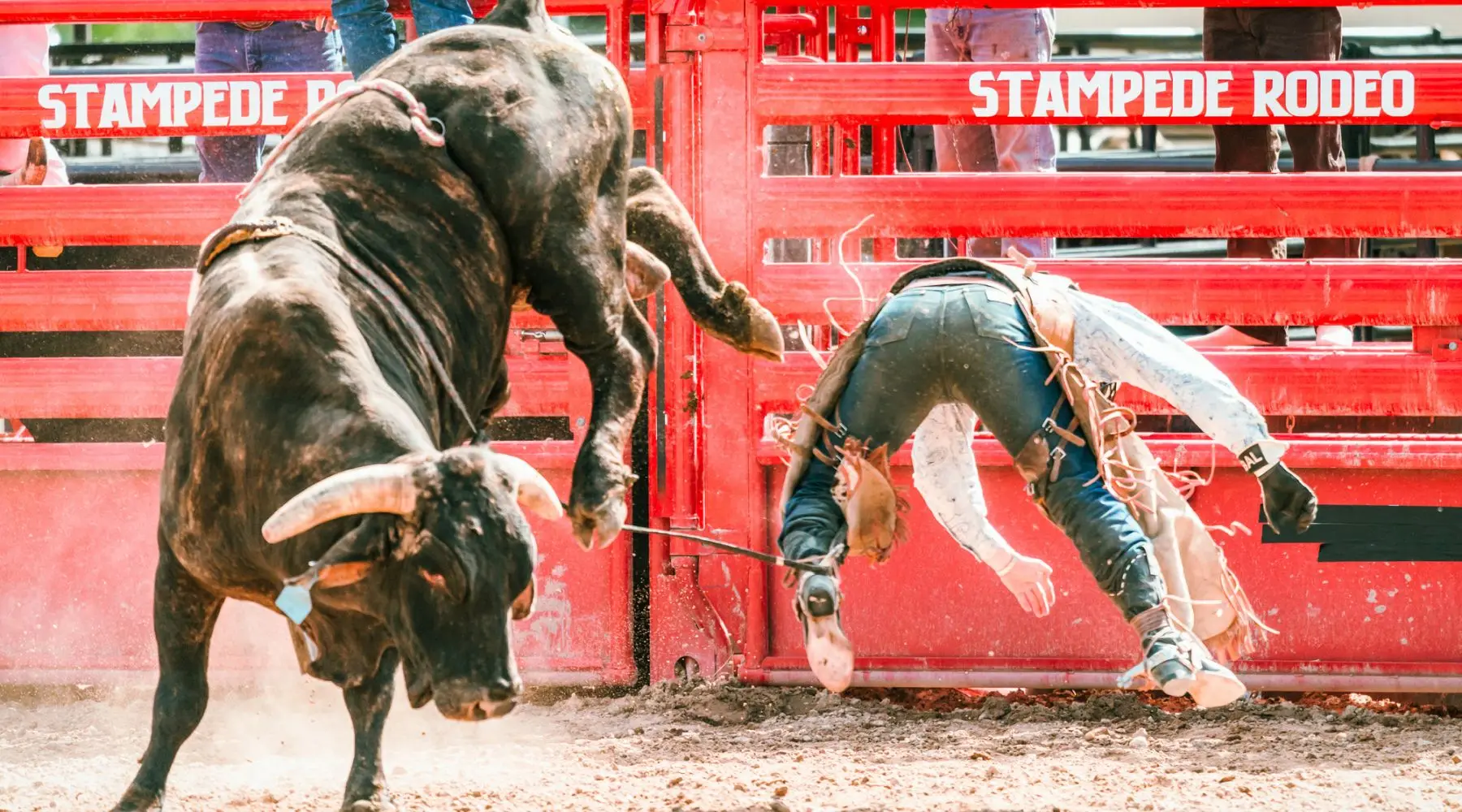10 most dangerous jobs in Australia
Agriculture, forestry and fishing continue to be some of the most dangerous jobs in Australia.


Each year, there are hundreds of fatal workplace injuries in Australia. In 2023, 76% of all work related fatalities and 61% of serious workers' compensation claims occurred in just 7 industries:
Of course, there are other industries that pose a risk to everyday Aussies, even ones that may seem perfectly safe.
Road and rail drivers accounted for the most workplace deaths in 2023. However, their job isn't considered the riskiest. That's because agriculture, forestry and garden workers have a higher risk of workplace death and injury per 100,000 workers.

With careers ranging from farmers and park rangers to scientists, the agriculture, forestry and fishing industry has routinely been at the top of the most dangerous jobs list. Common dangers include hazardous equipment and machinery, as well as harmful chemicals. The fatality rate per 100,000 workers was 9.2 in 2023, by far the highest of any other work sector.

The transport, postal, and warehousing industry can be a hazardous industry, with manual labour jobs like truck driving, postal work, and warehouse work. Which has led to injuries being more common. There were 7.0 fatalities per 100,000 in 2023.

From working at height to moving objects and manual handling, construction workers need to be constantly vigilant in order to stay safe. Construction industry workers can include everything from common labourers and earthmovers to carpenters, plumbers and electricians. Construction had one of the highest fatality rates in 2023 at 3.4 fatalities per 100,000 workers, with 45 deaths overall.

This sector has historically been a dangerous area to work in Australia. Some of the leading causes of fatality include electrocution, falling from heights, and contact with heavy machinery. Jobs in this industry can include electricians, plumbers, gas workers, industrial waste management and dangerous waste disposal roles. The electricity, gas, water and waste sector had 2.5 deaths per 100,000 workers in 2023.

Arts and recreation services workers include people who work in zoos and parks, as well as professional and recreational sports and amusement centres. For this one, your job will make a huge difference to the dangers you face. In 2023, the arts and recreation sector had 2.5 deaths for every 100,000 workers.

The mining industry includes the likes of riggers, excavators, drillers and crane operators. Because it is a heavy industry, it's always going to be dangerous. However, deaths have fallen in recent years in Australia thanks in part to improved safety measures - with 2.1 deaths per 100,000 workers in 2023 compared to 2.5 in 2022.

Including police officers, emergency service workers, firefighters, and security personnel, public administration and safety is a naturally dangerous field to be in. The leading causes of fatalities are vehicle accidents, assaults, and exposure to hazardous situations and substances. In 2023 there were 16 work-related fatalities in the sector.

Manufacturing includes light industry roles such as clothing and textiles, as well as heavy industries like metal manufacturing and oil and chemical manufacturing. The heavy industries are predominantly more dangerous, with 12 people losing their lives while working in the manufacturing industry in 2023.

Some roles in the wholesale trade industry include transportation and material moving occupations, and installation, maintenance and repair occupations. Dangers include body stressing, falls, slips and trips, being hit by moving objects as well as machinery and equipment such as forklifts and pallets. In 2023, there were 1.1 deaths per 100,000 workers in the industry.

The administrative and support services industry is not exclusively made up of desk jobs. Roles can include building cleaning, pest control and gardening services. In 2023, there were 4 fatalities.
Here are the industries with the highest average fatalities per year. The ranking is according to a 5-year average from 2019 to 2023.
Rank | Industry | Average no of fatalities per year | Fatality rate per 100,000 |
|---|---|---|---|
1 | Transport, postal and warehousing | 53 | 7.5 |
2 | Agriculture, forestry and fishing | 38 | 10.9 |
3 | Construction | 30 | 2.8 |
4 | Manufacturing | 14 | 1.3 |
5 | Public administration and safety | 10 | 1.2 |
6 | Mining | 7 | 3.6 |
7 | Other services | 4 | 1.0 |
8 | Electricity, gas, water and waste services | 4 | 2.4 |
9 | Wholesale trade | 4 | 0.8 |
10 | Administrative and support services | 5 | 1.4 |
11 | Arts and recreation services | 4 | 1.6 |
12 | Accommodation and food services | 3 | 0.2 |
13 | Education and training | 2 | 0.6 |
14 | Retail trade | 2 | 0.4 |
15 | Health care and social assistance | 2 | 0.2 |
16 | Professional, scientific and technical services | 1 | 0.2 |
17 | Rental, hiring and real estate services | 1 | 0.1 |
18 | Information media and telecommunications | 1 | 0.4 |
19 | Financial and insurance services | 0 | 0.0 |
Machine and operator drivers accounted for 73 workplace deaths in 2023, and 60 of those were road or rail drivers. They accounted, by far, for the most workplace deaths in Australia.
Occupation | Number of fatalities in 2023 | Number of fatalities (5-year average) |
|---|---|---|
Machinery and operator drivers | 73 | 72 |
Road and rail drivers | 60 | 57 |
Mobile plant operators | 7 | 8 |
Machine and stationary plant operators | 6 | 7 |
Labourers | 53 | 39 |
Farm, forestry and garden workers | 9 | 9 |
Other labourers | 23 | 17 |
Construction and mining labourers | 19 | 10 |
Technicians and trades workers | 27 | 27 |
Construction trades workers | 6 | 6 |
Electrotechnology and telecommunications trade workers | 8 | 6 |
Automotive and engineering trades workers | 8 | 7 |
Community and personal service workers | 16 | 13 |
Protective service workers, health and welfare and personal fitness trainers | 16 | 13 |
Managers | 15 | 26 |
Farmers, and farm managers | 11 | 21 |
Professionals | 11 | 10 |
Design, engineering, science and transport, and arts professionals | 11 | 9 |
Clerical and administrative workers | 2 | 1 |
Sales workers | 2 | 1 |
Source: Safe Work Australia
The averages shown in this table have been rounded to the nearest whole number; therefore the sum of the figures for the 5yr average column may not equal the total average.
Men are far more likely to be injured at work compared to women. In 2023, 95% of fatalities were men. That means men accounted for 189 of the 200 deaths.
In 2023, the fatality rate for men was 2.6 in every 100,000 male workers, slightly up from 2.5 in 2023. In comparison, the fatality rate for women was 0.1 in 2023, down from 0.2 in 2023.
Middle aged workers accounted for most deaths in 2023, with people aged 55 to 64 suffering the highest number of fatalities, followed by those aged 45 to 54.
The table below shows the number of deaths between 2019 and 2023, distributed by age group.
2019 | 2020 | 2021 | 2022 | 2023 | |
|---|---|---|---|---|---|
Under 25 | 15 | 9 | 16 | 17 | 27 |
25-34 | 26 | 31 | 24 | 29 | 29 |
35-44 | 36 | 33 | 26 | 29 | 35 |
45-54 | 33 | 35 | 33 | 35 | 38 |
55-64 | 49 | 55 | 43 | 44 | 40 |
65+ | 32 | 33 | 30 | 41 | 27 |
The most likely cause of workplace deaths in Australia is some kind of vehicle collision. In fact, vehicle collisions were blamed for 46.5% of all workplace fatalities in 2023
The table below shows the average number of fatalities caused annually by specific incidents between 2019 and 2023. It also shows the percentage of fatalities caused by that type of accident.
Average number of fatalities | Percentage of fatalities | |
|---|---|---|
Vehicle collision | 398 | 42% |
Being hit by moving objects | 113 | 33% |
Falls from a height | 109 | 11.4% |
Being hit by falling objects | 82 | 9% |
Being trapped between stationary and moving objects | 46 | 5% |
Being trapped by moving machinery | 51 | 5% |
Contact with electricity | 39 | 4% |
Drowning | 15 | 3% |
Rollover of non-road vehicle | 6 | 3% |
Contact with hot objects | 8 | 1% |
Slide or cave-in | 6 | 1% |
Being hit by an animal | 7 | 1% |
Other | 4% |
The Northern Territory has the highest rate of workplace fatalities per 100,000 workers, while NSW has the most deaths overall.
The table below shows the average number of workplace fatalities per year as well as the average rate of death per 100,000 workers. It relies on Safe Work data from 2019 to 2023.
Average number of workplace fatalities | Average rate of death | |
|---|---|---|
NSW | 55 | 1.3 |
QLD | 44 | 1.8 |
VIC | 37 | 1.0 |
WA | 27 | 1.9 |
SA | 15 | 1.6 |
NT | 5 | 3.6 |
TAS | 5 | 1.8 |
ACT | 1 | 0.4 |
Yes. If you die as a result of a work-related incident/accident, workers compensation insurance will pay a lump sum to your family. The set amount varies between different states. In NSW, the current lump-sum benefit is $938,600.
Workers compensation will also pay a benefit for funeral expenses as well as other costs such as travel and accommodation for family members who want to attend the service.
If you suffer an injury while you're at work, workers compensation insurance will cover lost wages as well as any medical expenses and rehabilitation costs.
However, workers compensation is typically capped at 130 weeks unless you're totally incapacitated. Self-employed workers also tend to be excluded from workers compensation.
These are just some of the reasons why many Aussies choose to take out income protection insurance or life insurance in addition to the workers compensation cover they receive through their employer.
Yes. Life insurance can help make sure your family is looked after if you die in a workplace accident. It can also help if you suffer an injury and are unable to work for a while or ever again.
There are a few different kinds of insurance that can help people in risky jobs or anyone who wants to make sure their family will be financially sound.
Life insurance pays a financial benefit to your family if you die, regardless of whether it's work-related or not. Some policies will also pay out if you are diagnosed with a terminal illness.
Income protection insurance is designed to replace a portion of your income if you're ever too sick or injured to work. Typically, payments are capped at two years.

Total and permanent disability insurance pays a lump-sum benefit if you become permanently disabled through injury or illness and are no longer able to work.

Trauma insurance pays a financial benefit if you are diagnosed with a specific injury or illness. It can be bought as a standalone policy or as part of a wider life insurance package.
Here are some other key findings from the Safe Work Australia over the five year period between 2019 to 2023:
Real Income Protection Insurance has similar cover to many popular providers. However, optional extras are limited.
With ahm income protection, you can over up to 70% of your income (up to $10,000 monthly) if you can't work after sickness or injury.
Income protection can be super valuable for when times get tough. Learn the basics with our beginners guide.
Learn the built-in benefits of TAL income protection to understand how it could work for you. Compare features and get a quote today.
Find out what is and isn't covered by AAMI Income Protection and how to apply.
Read the Finder review of Zurich income protection and receive a quote based on your details. Compare Zurich income protection to other income protection policies available.
Receive income cover for illness or injury with Suncorp Income Protection.
NobleOak has been offering personal insurance solutions direct to Australians for over 137 years. Discover the benefits and features available on the NobleOak Income Protection policy and make a secure enquiry for cover.
Looking to protect your income if you suffer a serious illness or disability? Insuranceline Income Protection can cover up to 75% of your income
Looking for the best income protection insurance but not exactly sure where to start? Compare the Finder Awards 2024 insurance winners.